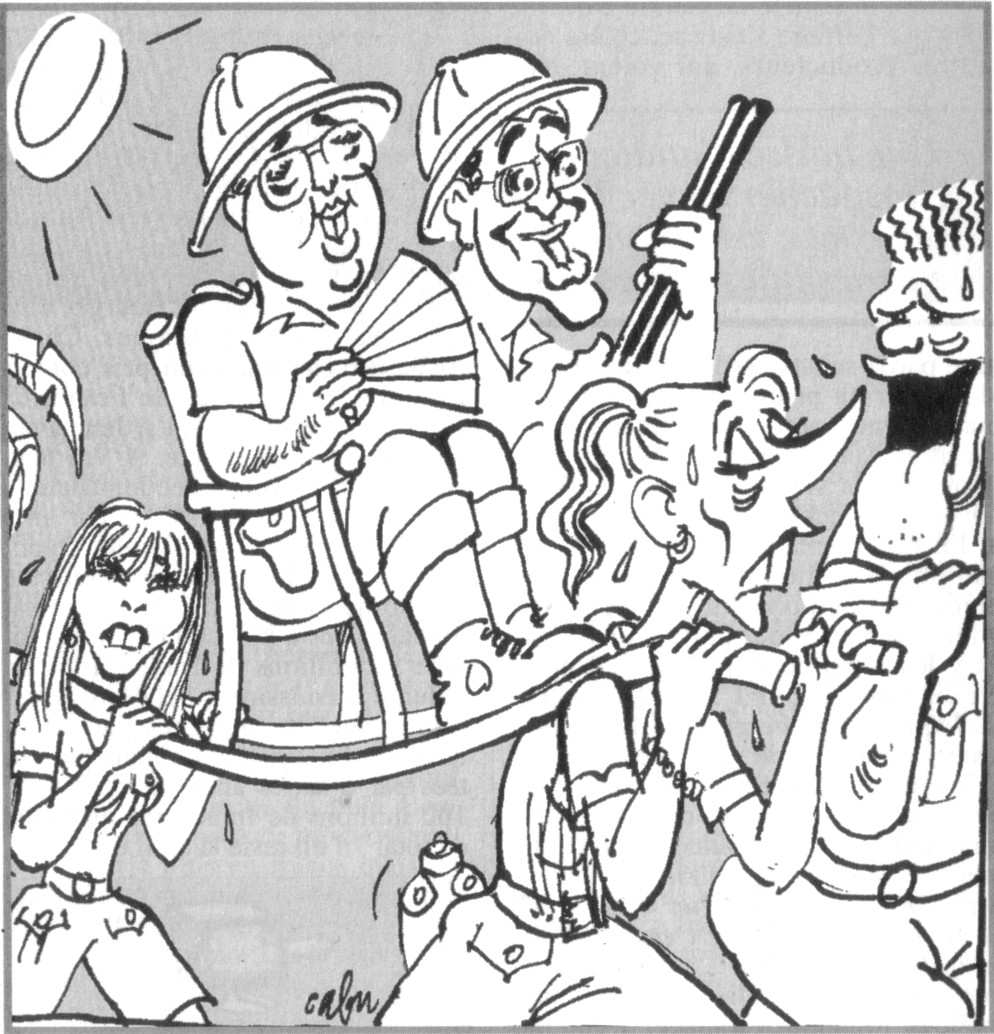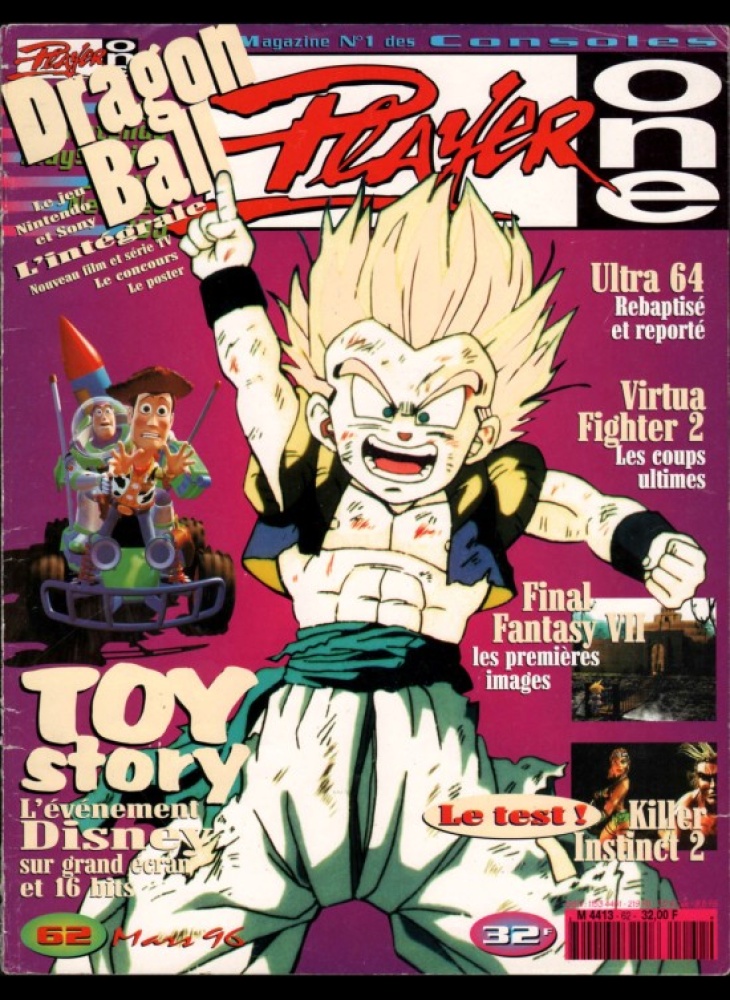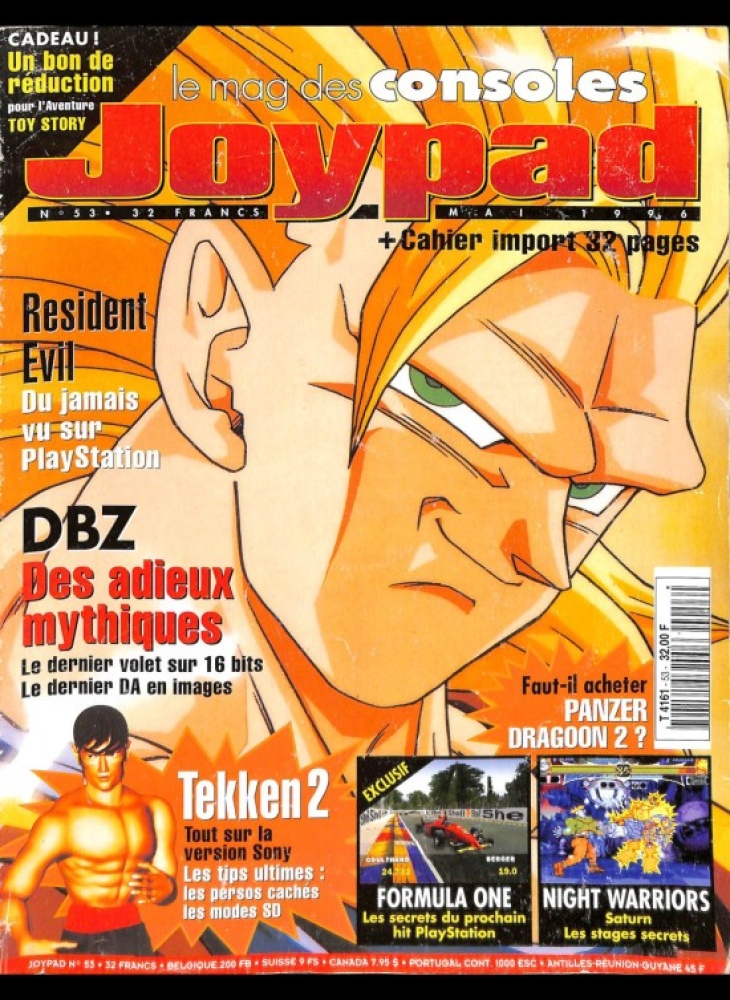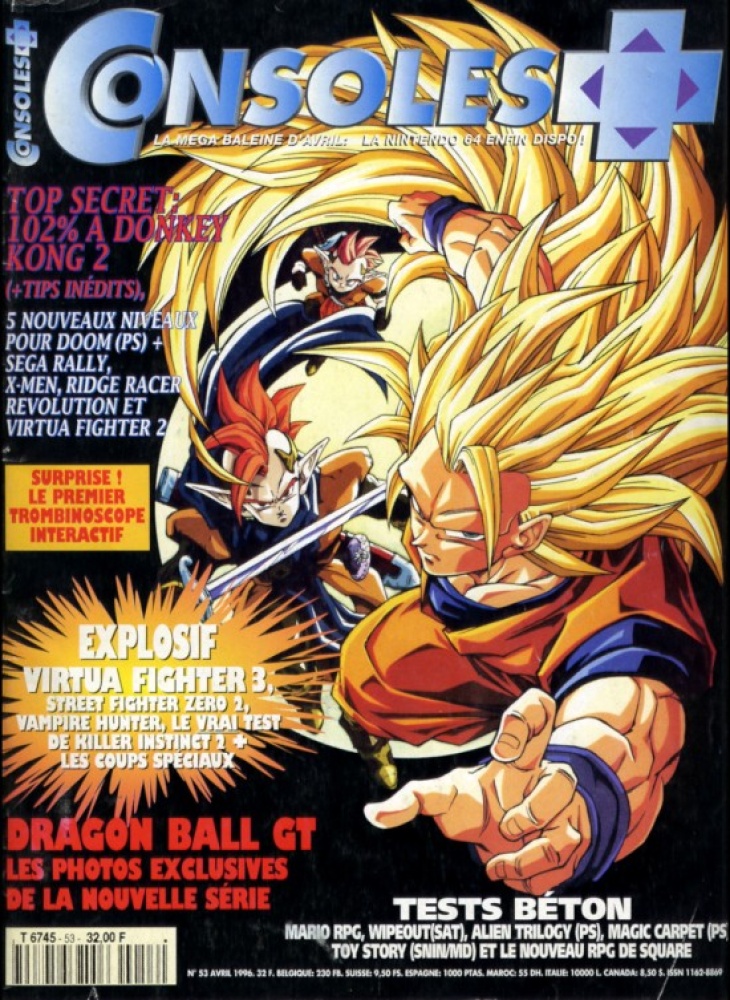Page d'accueil
News
Notre définition
Participez
Jeux Abandonware
Abandonware facile
Dans le navigateur
Trésors exhumés
Sagas/séries
Démos/Shareware
Non Abandonware
Chambre vaudoue
Jeux éducatifs
Logiciels culturels
Advergames
Solutions
Trucs & astuces
Utilitaires
Dosbox.fr
F.A.Q.
Manuels
Magazines
Livres
Romans de Gilles
Livre de Hoagie
Guides de S.Rocher
BIIPER
Screenshots
Covers
Scans Disques
Publicités
Abandonware TV
Musiques
Logos&Sonneries
Compagnies
Personnalités
Compilations
Récompenses
Dossiers
Salons & Evts
Timelines
Parc Minecraft
Zone Membres
Forums
Discord
Page Facebook
Page Twitter
Page Instagram
Groupe Steam
Chaîne Youtube
Chaîne Twitch
Tests des membres
Fan Arts
Donateurs
L'équipe
Historique
Livre d'or
Aidez-nous
Contact
Partenariats
Liens sélectionnés
Les news de LTF
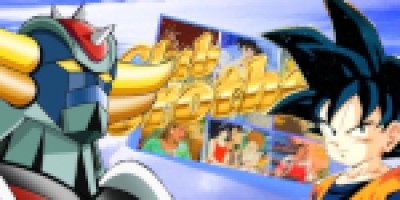
Made in France
#MadeInFrance 12 : Robots, dragon balls and ABsurdities
 Par Hoagie
Par Hoagie  13/10/2025
13/10/2025  0 commentaire
0 commentaire
The goal of the section "Made in France" of our blogs is to share some specific facts about the French video game industry to non-French gamers. But many of these gamers are also japanime and manga fans, and they're probably oblivious to the way this pop culture became popular in other countries - and specifically in France, where it went quickly out of control. Since nobody seems to be willing to share this crazy story in English, I'll do it myself, even though I'm not an otaku - and I'll make connexions to the video game world wherever I can. So if you think you're ready for this trip - and believe me, you're not - fasten your seatbelt and let's set our time machine to the early '80s. Let's go!
 Remember the Good Times
Remember the Good TimesIt's hard to believe now that in 1983, there were only three TV channels in France: TF1, A2 and FR3. They were state-owned, but managed independently. As a result, they competed against each other, with significant differences in their identities - FR3 had some time slots specific to each French region, for instance. Of course, they had their own programs for children. TF1 had the classic "L'Île aux enfants" (1974-1982). On Antenne 2, you could find one of the weirdest shows of its kind: "Téléchat", a short tongue-in-cheek spoof of TV news animated by a cat, an ostrich and other latex puppets. Nowadays some people say that it scared them when they were kids, but for me it was fun and clever.
Come on, that's not so scary... No?
The most popular kids show on TV was "Récré A2" (1978-1988). It was set up by Jacqueline Joubert, the head of the children unit of Antenne 2. "Récré A2" had a few main hosts, one of them was a young woman nicknamed Dorothée (her real name was Frédérique Hoschedé), that Jacqueline Joubert had noticed in a theatre competition. Next to these hosts, there was a full team that included Ariane Carletti, Zabou Breitman, a bearded cabaret singer named François Corbier, the fools Jacky and Patrick Simpson-Jones, the cartoonist Cabu (of Canard enchaîné / Charlie Hebdo fame), Marie Dauphin, Charlotte Kady and more. "Récré A2" adressed many subjects: cartoons, reading, science, music, movies, and even a column about video games ran by Jacqueline Joubert's son, Antoine de Caunes (who hosted with Jacky and the rock critic Philippe Manoeuvre "Les Enfants du rock", the major rock music TV program in the mid-'80s). "Récré A2" was praised for its quality and educational value. Meanwhile, the music producer and manager Jean-Luc Azoulay convinced Dorothée to record songs that he would release on his music label AB Productions (cofounded with Claude Berda - hence the "AB"). These records were very successful, and some of her songs were featured in musicals.
Antoine de Caunes shows Dorothée the latest video games (1982)
"Récré A2" contained a fair share of animes from France, USA and Japan. From France, there was for instance "Clémentine" (which was GRIM, if my blurry memory serves me well - Wikipedia told me it has a cult status in Turkey!), and the classic "Les Mystérieuses Cités d'or", produced by Jean Chalopin, who had opened a subsidiary of his animation company in Japan to coproduce other legendary animes such as "Ulysse 31" and "Inspecteur Gadget". From the USA, the animated series "Pac-Man" was premiered in September 1984, just when the American video game industry had collapsed. The first broadcasting of a Japanese anime had happened in 1962, but the breakthrough arrived in "Récré A2" in July 1978. "Goldorak" ("UFO Robot Grendizer") was instantly a huge success among boys, the biggest phenomenon since "Astérix". Six months after its launch, it was featured on the cover of the weekly news magazine Paris Match (01/19/1979), with a three-page article listing the flood of tie-in products generated by this anime and showing a few pics of the Toei studio. "Goldorak" epitomized the arrival of japanimation in France. "Albator" ("Uchû kaizoku Captain Harlock", 1980) was a big success too, so much than two fans would later ask Leiji Matsumoto to design their music video (yes, I'm speaking of Daft Punk). Among girls, "Candy" was very popular. They were followed by "Tom Sawyer" (1982), "Tchaou et Grodo" ("Hoero ! Bun Bun", 1984), "Cobra" (1985) and "Lady Oscar" ("Versailles no bara", 1986). And there were live series too: "San Ku Kaï" ("Uchu kara no messeji : Ginga taisen", 1979), "Spectreman" ("Supekutoruman", 1982), "X-Or" ("Uchū Keiji Gyaban", 1983), with their cheap monsters and special effects.
TF1 was not outdone, with some great stuff: "Heidi" ("Alps no shôjo Heidi", 1979)," La Bataille des planètes" ("Kagaku ninjatai Gatchaman", 1979), "Capitaine Flam" ("Captain Future", 1981), "Rémi sans famille" ("Rittai anime ie naki ko", 1982), "Gigi" ("Mahô no Princess Minky Momo", 1984), "Astro le petit robot" ("Tetsuwan Atom", 1986)... FR3 had "Belle et Sébastien" ("Meiken Jolie", 1983) and "Edgar le détective cambrioleur" ("Lupin Sansei", 1985).
These series were popular, the singles of their title songs sold quite well too, but they raised some eyebrows. In the early '80s, when the influence of American pop-culture was still contained and the Japanese exportations were booming, many people saw these animes as low-cost Japanese junk for gullible children.
They hadn't seen anything yet.

In the album "Ne rêvons pas !" (1981) of the comics series Achille Talon, a baddie is threatened to be forced to watch over and over again a single episode of "Goldator the space kamikaze", the favorite series of six-month olds and Paul Guth. The reference is cystal clear.
 Wind of Change
Wind of Change1984 marked the beginning of privately-owned TV channels in France. The first one was Canal+. Its economic model was unique: some of its time slots (noon and prime time) were available to everybody, but to watch the rest you had to subscribe a monthly fee to rent a cable box. Then came La Cinq (Silvio Berlusconi's channel) in 1986 and M6 in 1987. In 1986, the newly elected conservative government decided that the French state owned too many channels and that TF1 would go private. In April 1987, the deal was won by the building group Bouygues who promised to support the cultural value of the channel (massive retrospective LOL). TF1 was now managed by Patrick Le Lay and Etienne Mougeotte, the former being later known for saying that his job is basically to sell available brain time to Coca-Cola. As several key TF1 personalities were already leaving to La Cinq (their main competitor on the advertising market), the CEO Francis Bouygues opened its paycheck to sign many big names. He made the "Récré A2" team an offer they couldn't refuse, and they didn't: Dorothée, Corbier, Ariane and Patrick Simpson-Jones were "bought" by TF1 (plus Jacky, who had already moved to TF1 earlier). "Récré A2" survived only one year to this mass departure. For their former partners, and especially for Jacqueline Joubert, it was like a stab in the back.
 Top of the Bill
Top of the BillWhen the "Club Dorothée" debuted on TF1 in September 1987, the paradigm shift was quite obvious. Entirely produced and shot by AB Productions, this new flashy show featured a live stage for Dorothée, her team and her backing band, "Les Musclés" (more on them later). The name of the show implies two things: it was centered on Dorothée (who said "cult of personality"?), and it was a club in her honor. Indeed, children could call a premium-rate phone line or the Minitel server "3615 DOROTHEE" to try to win prizes and tie-in products or to be invited to the shootings of the show, and they were often encouraged to do so during the show - a real club with a membership card was launched in 1991. The commercialism was blatant, with sponsorships, commercial breaks and intensive promotion of anything managed/produced by AB Productions. The show had also its own magazine, aptly named "Dorothée Magazine".

A picture that will fill French people over 40 with either nostalgia or disgust.
Clockwise from top left: Patrick Simpson-Jones, Corbier, Dorothée, Jacky, Ariane and, er... Who's that?
Qualitatively speaking, how was the "Club Dorothée"? Simple: it was absolute TV variety shlock that often put the cringe level over 9000. In 1994, the satirical newspaper Le Canard enchaîné described it as "a cocktail of cumbersome tomfoolery, hardly animated series, lotteries and corny tunes served by the everlasting Dorothée, assisted by her four loyal soup-servers Ariane, Jacky, Patrick and Corbier". The embarrassing moments in this show are too numerous to list, but it's impossible not to mention the sketches where Jacky played the general Von Jacky, dressed in a Wehrmacht uniform and speaking with a heavy German accent. This is even more awkward when you know that Jacky (stage name of Jacques Serge Jakubowicz) is Jewish and that he would later host some programs on the Jewish cable TV channel TFJ.

French humor for kids (GIF by franceinfo.fr)
Saying the "Club Dorothée" was successful is as euphemistic as saying the Titanic was a naval disappointment. It was the colossus of TV entertainment for children, usually gathering 45% to 65% of kids in front of the TV, and sometimes 80%! It spawned some spin-offs, like Jacky's own program, the "Jacky Show". From 1982 to 1996, Dorothée released one music album per year (produced and co-written by Jean-Luc Azoulay under the pseudonym "Jean-François Porry") on the AB Productions label, and they sold like hot cakes. In 1992, she was able to perform twelve evenings almost in a row at the Palais Omnisports de Paris-Bercy, the biggest European indoor sports arena (average capacity: 16.000 people), full of high-pitched screaming kids and appalled parents. It was the most successful tour of the year, with more tickets sold than Michael Jackson and Johnny Hallyday.
 Tokyo Tapes
Tokyo TapesOne of the main causes of this popularity is japanimation. AB Productions was in the business to make money, and they knew it was much cheaper to import and dub American and Japanese animes - especially those sponsored by tie-in products - than to produce French ones. That's why they massively imported Japanese stuff "by the pound", without checking seriously if their content was suitable for children, as this incomplete list shows (hold your breath) : "Bioman 2" (1988), "Les Chevaliers du Zodiaque" ("Saint Seiya", 1988), "Cherry Miel" ("Cutey Honey", 1988), "Dr Slump" (1988), "Dragon Ball" (1988), "Galaxy Express" ("Ginga Tetsudô 999", 1988), "Jeu, set et match" ("Ace o nerae", 1988), "Juliette, je t'aime" ("Maison Ikkoku", 1988), "Ken le survivant" ("Hokuto no Ken", 1988), "Lady Georgie" (1988), "Lamu" ("Urusei Yatsura", 1988), "Le collège fou fou fou" ("Highschool ! Kimengumi", 1989), "Grand Prix" ("Grand Prix no taka", 1989), "Mes tendres années" ("The Kabocha Wine", 1989), "Muscleman" ("Kinnikuman", 1989), "Dragon Ball Z" (1990), "Caroline" ("Himitsu no Akko-chan 2", 1990), "Les Samouraïs de l'éternel" ("Yoroiden Samurai Troopers", 1990), "Nicky Larson" ("City Hunter", 1990), "Prince Hercule" ("Bikkuriman", 1990), "Sally la petite sorcière" ("Mahôtsukai Sally", 1990), "Le Petit Chef" ("Mister Ajikko", 1991), "Magique Tickle" ("Majokko Tickle", 1991), "Tommy et Magalie" ("Miyuki, 1991), "Meg" ("Majokko Megu-chan", 1992), "Ranma 1/2" (1992), "Sailor Moon" (1993), "Très Cher Frère" ("Oniisama e", 1993)...
In this list, you may have noticed "Fist of the North Star". As soon as it was aired in the "Club Dorothée", some parents complained about its violence to the CSA (the TV/radio state authority in France). Articles about the violence in Japanese animes started to pour in the press, the series was nearly cancelled. Then the voice actor Philippe Ogouz and his team suggested an idea to tone down the graphic violence: silly dubs. They literally improvised the dialogues and filled them with stupid puns, pronounced with squeaky voices. It resulted in hilarious zaniness, that predated other voiceover spoofs like "La Classe américaine" by a few years. And it worked! It was validated by the CSA, and "Ken le survivant" became cult just for its dialogues. To give an example: in French, the martial art "hokuto" sounds exactly like "haut couteau" ("high knife"). That's why the series is full of punchlines such as "the king of the very sharp hokuto", "he's going to use the kitchen hokuto technique" or "the spirit of the butter hokuto school"!
A selection of cult lines from "Ken le survivant"
I HAD to include this one too.
At 0:24, the monologue is literally "Julia, I haven't finished building the banister, Juliaaaaaa! It's not possible, bring me this architect, she's dead because of him!"
Another notorious case of audio nonsense was "City Hunter". The main characters had new American-sounding names (Ryo Saeba = Nicky Larson, Kaori = Laura Marconi, Umibozu = Mammouth (?!)), but the bad guys had typically French names (Maurice, Robert, Raoul, and so on), and these baddies had their share of stupid voices and childish punchlines - they don't hurt or kill, they "make boo-boos". Several other animes were more or less edited, usually to respect the guidelines of the CSA: all character being given French names, modified dialogues, cut-up scenes, discarded episodes... The CSA even required the termination of the anime "Muscleman", because of the swastikas shown in some episodes.
A selection of Nicky Larson's dialogues
(warning: explicite images of bad guys threatening to make boo-boos)
The other TV channels tried to compete as they could:
- La Cinq, the main rival of TF1, used a similar policy, with more caution about the content. They rivalled with them in the quantity of broadcasted japanime: "Cathy la petite fermière" ("Makiba no shôjo Katri", 1987), "Charlotte" ("Wakakusa no Charlotte", 1987), "Emi magique" ("Mahô no star Magical Emi", 1987), "Jeanne et Serge" ("Attacker You !", 1987), "Le monde enchanté de Lalabel", ("Majô shôjô Lalabel", 1987), "Princesse Sarah" ("Shôkôjo Sara", 1987), "Robotech" ("Chôjikû yôsai Macross", 1987), "Cynthia ou le rythme de la vie" ("Hikari no densetsu", 1988), "Embrasse-moi Lucile" ("Ai Shite Knight", 1988), "Olive et Tom" ("Captain Tsubasa", 1988), "Gwendoline" ("Lady Lady !!", 1989), "Les Quatre filles du docteur March" ("Ai no wakakusa monogatari", 1989), "Supernana" ("Nanako SOS", 1989), "La Tulipe Noire" ("La Seine no Hoshi", 1989), "Max et compagnie" ("Kimagure Orange Road", 1990), "Ashita No Joe 2" (1991), "Samurai Pizza Cats" ("Cats Tôninden Teyandee", 1991) and many more. But they were usually less popular than the "Club Dorothée" - and so was La Cinq, which was shut down in 1992.
- Antenne 2 mostly gave up japanime after 1987.
- FR3 had "Signé Cat's eyes" (1986) et "Dan et Danny" ("Dirty Pair", 1989), but it was probably not as successful as "Denver the Dinosaur" and "Teenage Mutant Ninja Turtles" (1990).
- Canal+ had premiered some Japanese stuff such as "Bioman" and "Cobra" in 1985, and later they aired things like "Isabelle de Paris" ("Paris no Isabelle", 1989), but they didn't really need japanime : they had "Looney Tunes", "The Simpsons" and "Tiny Toons".
 Live Bites
Live BitesAs I already mentioned, Dorothée had a backing band called "Les Musclés", made up of five studio musicians with respectable résumés (Claude Chamboisier had worked with Fleetwood Mac, René Morizur and Éric Bouad with Johnny Hallyday, René Morizur and Rémy Sarrazin had played in Magma). In 1988, AB Productions gave them the opportunity to release albums and singles under their own name - but with most of the material written by Jean-Luc Azoulay, as usual - and, well... Um... Pfff... OK, let's face it: it was some of the most stupid music recorded in France at the time (and believe me, there was), silly drinking songs and lyrics containing nonsubtle sexual innuendos ("Merguez-partie", anyone?), and of course they sold very well too - "La Fête au village" reached the second place in the charts in 1989. I post some of their music videos here, but I decline all responsibility for any IQ loss if you watch them.
Merguez-partie (1989)
La Musclada (1990)
 Pictured Life
Pictured LifeAnother trick up AB Productions' sleeve was the sitcoms. In 1989, they produced and shot "Les Musclés"' own comedy sitcom, "Salut les musclés", which is as you would have expected: cheap backgrounds, lousy humor and laugh tracks everywhere. It was only the beginning: in 1992, a new law enforced TV channels to fund and broadcast a minimum amount of French fictions. AB Productions chose to make other low-cost sitcoms and started with "Hélène et les garçons", which was supposed to tell the love stories of a bunch of students. I say "supposed" because you never see any classroom or studying in this sitcom (nor any form of intelligence). "Hélène et les garçons" was as corny and artificial as it gets; in comparison, "Saved by the Bell" looked like "The Godfather". And yet it became a huge TV phenomenon (6 millions viewers!), so much that for people of this era, the word "sitcom" was synonymous with "Hélène et les garçons". The main actress, Hélène Rolles, started a musical career (supported by AB Productions, of course). AB Productions made several other sappy sitcoms in the same vein ("Le Miel et les abeilles", "Premiers baisers", "Les Filles d'à côté", "Le Collège des cœurs brisés"...), all aired on TF1. They relaunched the audience ratings of the "Club Dorothée" and replaced progressively the Japanese anime series, which were still under scrutiny from the CSA.
I'm gonna tell my kids this was "West Side Story"
(btw, this final episode was not aired by TF1 because of this scene).
Fun fact: AB Productions didn't care about representations, and all the main characters of their sitcoms were white, with one notable exception. In "Le Miel et les abeilles", a comic character role called "Giant Coocoo" was played by a
 Media Overkill
Media OverkillOK, so the "Club Dorothée" was hugely successful, the kids loved it, but what about adults? Well, to put it simply: Dorothée had become public enemy number 1. Sort of.
I'm hardly exagerating: Dorothée was absolutely loathed by most teachers and parents (and even people without children). TF1 was the incarnation of trash TV - La Cinq was hardly better - and lots of people were upset to see kids enjoy what was considered as the nadir of children entertainment. Depending on whom you talked to, Dorothée was depicted as a soulless woman who made money by dumbing down children, or a puppet in the hands of AB Productions (or both), and the fact that she stayed single and child-free to focus on her career made her even more contemptible in the eyes of the parents. Among the most famous "Club Dorothée"-bashing moments:
- The cultural magazine Télérama is claimed to have created the portmanteau "japoniaiseries" ("japonais"/"Japanese" + "niaiseries"/"silliness"), which became the favorite pun of japanime-critical people.
- In 1989, the member of parliament Ségolène Royal released a book called "Le Ras-le-bol des bébés zappeurs" ("The Discontent of Channel-Flipping Babies" - yeah, what a title), in which she condemned the flow of American TV series and Japanese animes, and feared that children growing on this would end up less French and more Americano-Japanese. The answer of the "Club Dorothée" was sharp: a sketch of Ariane, dressed as a tramp, finding Ségolène Royal's book in a trash can.
- In 1993, the magazine VSD put Dorothée dressed as Jeanne d'Arc on its cover, with the title "Should Dorothée be burnt?" (did she pass the duck test, at least?).
The "Club Dorothée" was a topic of choice for many comedians, as you can see in these videos:
Spoof of "Bioman" (and sentai series in general) by Les Inconnus
with a few racist hints about the Japanese, because French humor
Spoof of the "Club Dorothée" by Les Nuls
In "Les Guignols de l'info", Dorothée promotes the values of "Les Musclés" in front of the CSA
(don't worry if all the Musclés look like Sylvester Stallone, it's the Guignols)
The second and third videos were aired on Canal+, a significant detail because TF1 and Canal+ hated each other - or at least they pretended to, for their image. The humor in Canal+ shows was rather liberal, while TF1 had an openly conservative editorial line. "Les Guignols de l'info" made TF1's own puppet show, "Le Bébête Show", totally has-been. It was part of a very popular prime-time show called "Nulle part ailleurs", and its co-host was none other than... Antoine de Caunes! More than once he derided the stupidity of the "Club Dorothée", AB Productions sitcoms and "Les Musclés". As a response, Jean-Luc Azoulay made "Les Musclés" record a song making a fool of him, "Antoine Daicône". Classy.
Appearing in the "Club Dorothée" could even be a serious menace to credibility, as the German hard-rock band Scorpions learned after they performed "Under the Same Sun" at the "Dorothée Rock'n Roll Show" in December 1993 (watch trailer), along with other notorious rock'n roll acts such as David Hasselhoff, Dave and Enrico Macias (irony inside). Hard Rock Magazine shared the news with the comment: "haven't these people any kind of self-esteem?" Put in the dock in an interview for Hard 'n Heavy (06/1995), Rudolf Schenker explained that they had no idea who Dorothée was, that rock critic Philippe Manoeuvre had warned them that going to the "Club Dorothée" was the worst possible thing they could do in France and that they should refuse at all costs, but in the end they did it under pressure from their French record label. They regretted it, but their French fans never forgot - nor forgave.
 Don't Stop at the Top
Don't Stop at the TopDuring the early '90s, the popularity of the "Club Dorothée" was still very strong. In 1993, "Dragon Ball Z" became an absolute massive hit for a whole generation of kids, maybe bigger than "Goldorak". Even though less japanimes and more sitcoms were broadcasted, more and more fanzines dedicated to mangas and japanimes were launched, the most famous being Animeland, and manga libraries, such as the Tonkam shop in Paris, were blooming. In the middle of the decade, the publishing house Glénat started to release the French adaptations of "Akira", "Ranma 1/2", "Dragon Ball", "Dr. Slump", "Appleseed" and - my personal favorite <3 - "Gunnm". However, like the japanime wave a decade earlier, this manga craze worried the French comics industry.
Report at a comics shop in Grenoble (1995)
This craze also hit the French video game world. It encouraged Bandai France to import and translate several video games based on japanimes. "Dragon Ball" (NES), "Saint Seiya" (NES), "Sailor Moon" (Super NES) and several "Dragon Ball Z" games (Super NES) enjoyed a French localization, something quite unusual for console games back then - and it was not easy, the text windows were often too small to contain the French texts. Unlike the computer games journalists, the console games journalists were completely into mangas and japanimes. In 1994, the three main video games magazines - Player One, Joypad and Consoles+ - starter their monthly columns dedicated to this topic. Player One had already covered the anime "Dragon Ball" in their very first issue (09/1990), and they had supported the release of "Akira" in movie theaters in 1991 (fun fact: the man who signed the distribution deal of this movie in France was Jean-Martial Lefranc, cofounder of Cryo). The publisher of Player One even launched the magazine Manga Player in 1995. These video games magazines quickly noticed that "Dragon Ball Z" boosted their sales. Between 1994 and 1996, any excuse was good for mentioning "Dragon Ball Z" on the cover. Joypad did it fourteen times between April 1995 and October 1996, and Consoles+ did its last "Dragon Ball Z" cover in March 1998! As Alain Huyghes-Lacour, former editor of Consoles+, said: "I was not there to write poetry; despite the critics, every time we pulled out Dragon Ball, boom, we sold 5 to 10,000 more copies than usual" [average sales of Consoles+ in 1995 were about 65,000 copies/month].
French console games magazines in 1996: an overview
 Blackout
BlackoutHowever, in the middle of the decade, the writing was on the wall for the "Club Dorothée". The kids of the '80s had grown up, and the younger generation didn't care about them; they watched only the japanime parts of the show. The synthpop and corny humor were looking dated, and other children TV shows were eroding its ratings. AB Productions was also mostly exploiting its back catalog of japanimes rather than replenishing it. More importantly, they were so ambitious that they decided to launch their own cable TV network, AB Sat, in 1996. TF1 was suddenly less than happy to rely and spend so much on a company that was now their competitor. They were already producing their own TV content for children and started to reduce the broadcast time of the "Club Dorothée". Finally, in August 1997, TF1 announced the end of their collaboration with AB Productions, terminating the "Club Dorothée" exactly one decade after its inception.
This decision put the broadcasting of japanime on French TV to a grinding halt. The mangas were now an unstoppable force, but the Japanese animation had been given such a bad name - and the arrival of hentai in the manga shops didn't help - that the main TV channels abandoned them. The major exception was - to nobody's surprise - these damned Pokémons, first on Fox Kids in 1999 and then on TF1 (along with its copycat, "Digimon"). Japanime fans now had to be content with replays of old series on cable TV channels, or VHS and DVDs for the newer material.
And what about the "Club Dorothée" team, you may ask? The answer is: they kept a low profile. Some say they wanted to move to something else, others say that after years of "Club Dorothée"-bashing, they were now blackballed everywhere. The second option was confirmed by Bernard Minet, the vocalist/drummer of "Les Musclés": he said that as soon the show ended, his phone stopped ringing. François Corbier tried to pursue his musical career, and he was really fed up when people evoked his time with Dorothée. He refused to participate to their comeback in 2007, but he changed his mind later. Ariane kept working with Jean-Luc Azoulay behind the scenes, and Jacky hosted other shows on cable TV. "Les Musclés" disbanded (sigh of relief). After the commercial failure of her two latest albums (1995 and 1996), Dorothée completely vanished from the public eye for ten years.
 Still Loving You
Still Loving YouDespite (or thanks to) its infinite corniness, the "Club Dorothée" is still warmly regarded by many of its former fans. The deaths of Corbier (2018), Ariane (2019), and two of "Les Musclés" were received with lots of emotion - and let's not even mention Akira Toriyama's passing, which caused national mourning among French otakus. There were several nostalgic TV programs about the "Club Dorothée" over the years; the latest one, a four-hour special show in January 2025, gathered more than 4 millions viewers. Dorothée's comeback concerts in the '10s were quite succesful, and her next one (April 2026) has been sold-out in eight minutes. The "Club Dorothée" is largely responsible for the huge popularity of mangas and japanimes in France (should I mention the live action adaptation of "Nicky Larson" in 2019?).
If you want a bit more info (in French), you can check this neutral retrospective of mangas and japanimes in France on fangirl.eu, a video by the YouTuber Arkeo Toys, the YouTube channel Génération Club Do, the fansite ClubDo, several articles on sitcomologie.net about AB Productions sitcoms, and a more critical blog article about the "Club Dorothée" on Last Eve. AnimeGuides is a great database about animes (and AB Productions sitcoms, once again).
Ajouter un commentaire
Pour ajouter un commentaire, vous devez être connecté, ou vous inscrire à la zone membres.> Connexion / Inscription

